To say that I am excited about this issue of DIY Crafty Gamer is… an understatement. After showing off Max’s castle in Issue 3, I have been eager to show off some more tabletop terrain because I loooove seeing how people create immersive environments for their games. I saw Dave Tierney share an epic druid dice tower in The Tabletop Crafters Guild on Facebook and knew I had to share it here. After we started talking, I learned that he has been working on a FANTASTIC terrain project for his Dungeons & Dragons campaign. Read on to see dice towers, portals, goblin mines, ice caves, boats, and more!
To Play Is Human: What kind of DIY project are you sharing with us?
Dave: Primarily, I’m sharing a home made dice tower so that dice can be rolled effectively without them rolling off the table or knocking over things. Since I’m fairly new to crafting for tabletop games, I’m also sharing some of the terrain and models I’ve made recently to support and enhance the gaming experience of my players.
TPIH: What game(s) is the project/upgrade for?
Dave: I’ve been running a Dungeons & Dragons 5th edition Role Playing campaign with my wife and two of our best friends for 14 months. We play on a small dining table where space is at a premium. We started the campaign by using paper maps printed out from a computer but 5 months ago, I decided to enhance our gaming experience by upgrading to a fully modular 3-D terrain and miniature model system. I wanted our experience to be as immersive and fun as possible. I also discovered that crafting terrain, models, gaming props and these dice towers engaged a part of my creative skills that I’d never used on this small scale before.
Cleric Dice Tower
TPIH: Why did you decide to do this project?
Dave: This project started off as a way to solve a problem so you could say the idea was born of necessity. My players really enjoyed the change over from printed paper to models and miniatures but, over time, the table space got so cluttered that rolling dice became impractical. The obvious solution was to use dice tumblers or towers. However, they can be quite expensive to buy and we don’t live near a gaming store, so I decided to make them myself. We already owned one tower, that was purchased, so I studied the basic design and constructed my own dice towers, themed to the characters that my players control.
Dungeon Master’s Dice Tower
TPIH: How long did the project take and what kinds of materials did you use?
Dave: The Basic tower is made from thick card and assembled using hot glue. I also have 2mm plastic coated foam board left over from a DIY project so I used that too. It’s easy to cut and the plastic coating gives it more strength than the usual paper coated foam core that crafters often use. When I made the druid tower, I wanted it to look organic. Since I had no guide to follow and there are no projects similar to this on YouTube I had to make it up as I went along.
First, I thought of using paper and PVA glue (white glue, Elmer’s Glue) mixed with shredded toilet paper to make the bark of the tree but I really needed something that would allow me to bring out the texture of wood. So, I decided on polymer clay/Sculpey. It’s a modelling clay that hardens to a solid plastic texture after it’s baked in the oven. I started by coating the basic dice tower structure with toilet paper and white glue to hide the straight edges.
I then added layers of baking foil because it meant I only needed to make an outer skin from the clay. I used a pasta machine to roll out thin sheets of the clay and applied it on top of the foil until the whole tower was coated in a clay “skin”.
Then came the fun part. I used dental tools to sculpt bark texture onto the clay skin. I then added roots and branches and textured those. Then it went into the oven for baking. The house was soon filled with a strange smell of roasted plastic as I realised the basic foundation of the tower was made from plastic coated foam board and hot glue! When the piece had cooled, the internal pieces that actually cause the dice to roll inside the tower had melted and warped. This meant that the dice got stuck inside when tested.
Thankfully, I’d left the bottom as card, so I spent some time surgically removing a section of the base and inserting new pieces inside. With the tower working again, I then had the painting to do. First came a base coat of raw umber, followed by a wet ink wash in black to bring out the all the texture. I used artist’s sponges to gently layer on top coats in various shades of brown and green and finished off with some dry brush work in a very light brown. I added some moss to finish off the piece.
The project took around two days and some of it was like riding a crafting roller-coaster of emotions. There was one moment when the entire project was almost destined to end up in the trash can. After the internal pieces had melted in the oven and the unpainted tower looked like something had gone very wrong with a microwave meal, I very nearly gave up on it. My wife encouraged me to replace the melted internal pieces and carry on to paint it and I’m so glad I listened to her.
Tabletop Terrain
TPIH: What is your favorite thing about crafting for games?
Dave: I’m still learning when it comes to crafting for gaming. My background in art is mainly traditional oil painting and it was exciting to make miniature furniture, terrain pieces and even miniature monsters for the first time that could actually be used in a game of imagination.
I have to thank the creative genius of the many crafters that have YouTube channels and, of course, The Tabletop Crafters Guild on Facebook because without their superb creative ideas and tutorials, I wouldn’t even know where to start. After watching hours of videos on making anything from books that are no bigger than a grain of rice to painting modular dungeon tiles, I decided to jump in and have a go myself. It was like opening up a whole new world of creativity. Scenes in our game that previously had to be imagined and described came alive in front of my players as physical objects and terrain pieces. So not only is it fantastic fun to make things for the game, it’s even more fun watching my players examine an innocent looking treasure chest I made and have it suddenly turn into a mimic model that attacks them. Now they are suspicious of every chest I put out on the table, haha!
TPIH: Do you have any advice for someone thinking about crafting for their games?
Dave: My advice would simply be: just have a go! If you’re a GM running a role playing game and you’re nervous about crafting or don’t know where to begin, do what I did. Watch the many channels on YouTube dedicated to this hobby and you’ll soon see that you don’t need a lot of equipment, money or professional skills to craft basic terrain or models to use in your game. What I’ve learned in my crafting experience is that there’s no such thing as a mistake. Even something that you may think looks like your dog had a go at model making, your players will think is awesome! It’s easy to get self-critical and be put off from attempting something just because you’ve never made it before, but I’d say, jump in, and have a go. You lose nothing by trying.
TPIH: What tabletop game have you played recently that you loved?
Dave: I’m obviously a big fan of role playing games in general. I’ve played Pathfinder, Warhammer, Lord of the Rings, and various other table top fantasy games. I tried my hand at being a DM/GM for the first time 14 months ago and would highly recommend if you’ve never had a go at being a DM/GM, then give it a shot. It’s so different to playing. Your enjoyment comes from seeing your players having fun and engaging in something that you have created. In my case, I’ve had great fun creating scenarios, NPCs, monsters, events and story arcs. Even when you know what’s supposed to happen, your players can surprise you!
TPIH: What tabletop game is a longtime favorite of yours?
Dave: It has to be D&D. I owned the very first one that came in that famous red box back in the 80’s and I’ve always loved the genre. After spending years playing RPGs on computers, it was great going back to pen and paper gaming. There’s nothing like rolling a real dice, especially now that they all have their own towers. My GM tower is still work in progress but I included a light so my players know they are in combat. Fun, as well as practical.
FEEDBACK FROM THE PLAYERS
I also asked Dave’s gaming group what they thought of Dave’s terrain projects. They have each provided a little information about who they play, how the terrain enhances their gaming experience, and what their favorite detail is in the terrain Dave has made so far. Here’s what they had to say, along with some responses from Dave to explain specific pieces mentioned by the players:
:::LUISA:::
I’m Luisa, Dave’s wife, and I play an elf wizard and her mischievous imp familiar, who is the party rogue. I’m also a huge fan of RPGs both digital and tabletop. I LOVE all the detailed terrain. Being able to see the scene in front of us really brings the game to life. It also helps inspire creative thinking on how your characters can interact with the props – something you wouldn’t necessarily be able to do in theater of the mind.
My favorite piece is definitely the Dragon’s Tear gem. Who would have thought of using glass paint on a spare chandelier crystal? It’s absolute genius! The polymer clay dragon’s head sculpture is exceptionally well modeled.

Dave: The Dragon’s Tear gem my wife referred to is pictured along with another gem called the Unicorn’s Tear and a tome that I made from an old note book. The tear was made by sculpting a dragon head from polymer clay and baking it to a spare crystal from a chandelier. I used gold paint for the dragon and purple glass paint for the crystal. Luisa appreciated having a physical prop she could actually see and handle when the gem in question is used in the story. This prop is a key part of the campaign.
:::Ara:::
I’m Ara, an aspiring fantasy writer from the South of England. I met Dave at the Gaming Society in Wolverhampton University and enjoyed playing alongside him before he became our DM. I play a Cleric and her side-kick, a kidnapped (and now tamed) kobold bard.
I’ve always been proud of my imagination when playing with only pencil, character sheet and dice but the terrain not only makes it beautiful, it keeps everyone on the same page. We all know where everything is, there are no spoilers as he won’t get certain models out until we’ve reached them and we have fond memories to look back on by taking photos.
Picking a favorite piece of terrain is a hard one. I love the dice towers but they’re not terrain. My favorite would have to be Celemry’s Lair. Having our characters meet an ancient gold dragon was like being starstruck and seeing everything in her lair and where she lived felt surreal.
Dave: Celemry is the NPC gold dragon that the party needed to seek for help. Her lair was made up of modular terrain pieces, cave tiles and the large backdrop piece started life as a chunk of polystyrene packaging from a domestic appliance.
:::Olli:::

I’m Olli, avid gamer and tech guy. I met Dave through my now-girlfriend, Ara, as they were part of the university’s gaming society and met almost every week. I play a druid and his companion, a hot-headed dwarf who loves his ale and brawling!
The terrain has made it easier in knowing what options are available to us, while not bogging down the game in lengthy descriptions and having to memorize the layout of each room. There’s been a lot of work put into making the scenery and it really shows.
My favorite terrain has to be the dock with the merchant ship. I’m not sure what it was made out of, but it looked amazing. Detail-wise, the mage gates look great: they have Stargate-esque symbols around the edge and now even light up.
Dave: The boat he’s referring to was used for a scene where the party need to travel up a large river. I made it from scratch, using foam, craft sticks, balsa wood and match sticks. The portals also mentioned feature heavily in our campaign as a way of crossing large distances on the campaign map. They too were all made from scratch, using foam core, foam, card stock and paper. They all light up to indicate that they are active. I used LED tealight candles to provide the illumination.
And that’s a wrap on interviews with Dave and his group. Look below for more photos of his terrain! If you have any questions or comments for Dave, please leave a comment here on the blog or pop over to this post on Facebook.
Goblin Mines
Ice Caves
Loudwater Town
CALL FOR SUBMISSIONS
Do you have a tabletop gaming project that you’ve created? Contact me with some information and photos. No project is too big/small — as long as you made it yourself and you use it when you game, it is eligible for submission! I would love to see projects for board game upgrades and accessories, RPGs, miniatures (I would love to see mini paint jobs!), terrain, dice towers, custom playmats, custom dice, or anything else you have made.

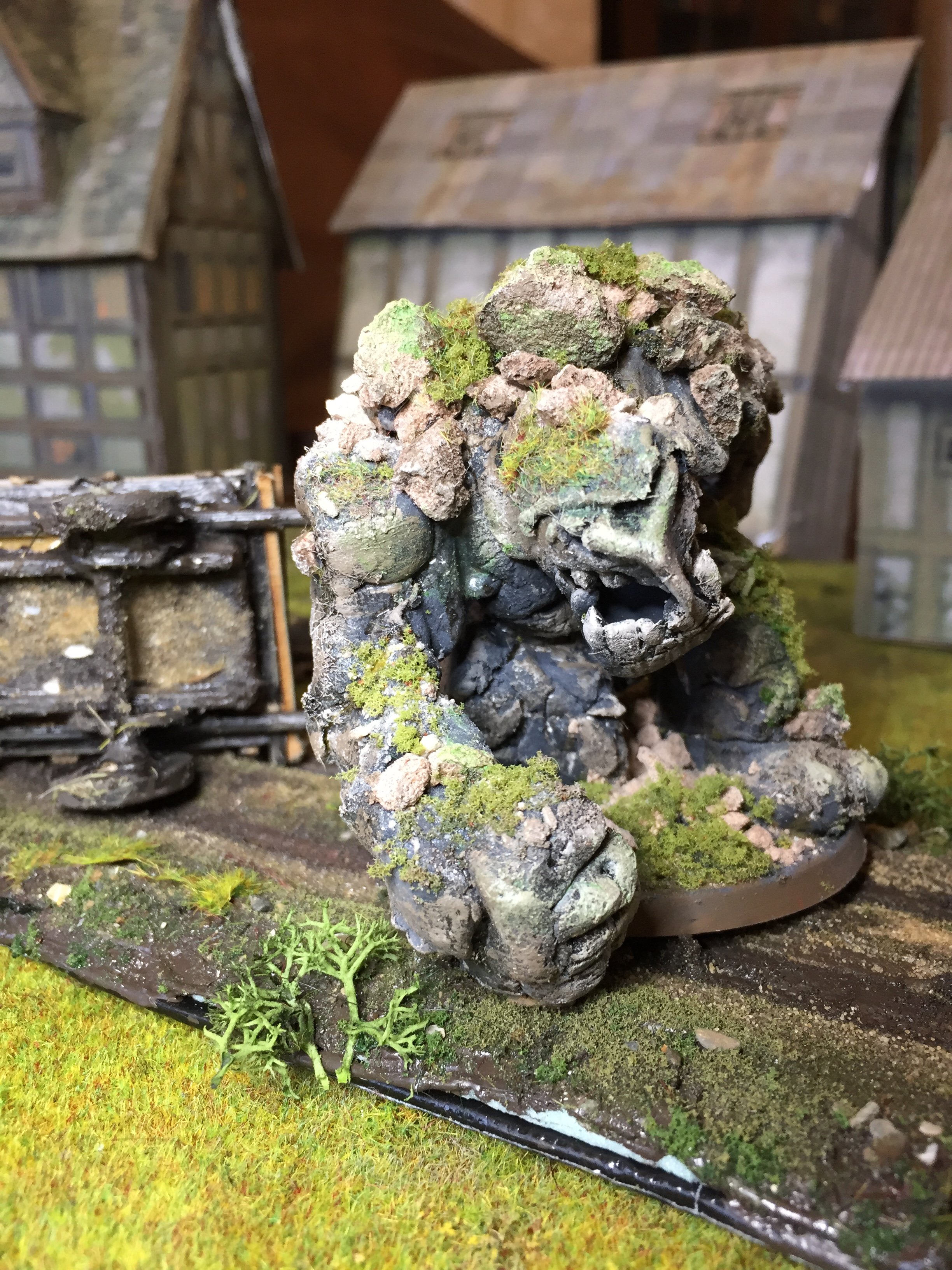




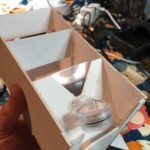



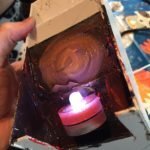










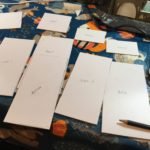



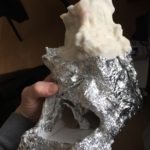

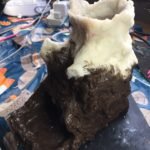























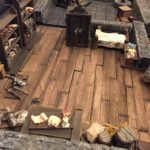
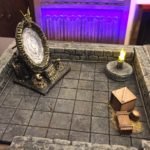

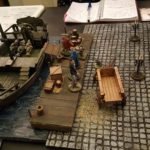












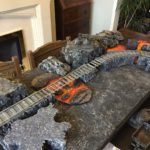



















Wow, awesome work! I have seen a lot of these pieces in the Crafters guilde… But seeing them all together on the table is breathtaking. Top shelf work.
I was blown away when Dave started showing me the photos. It all looks superb! Definitely jealous of his group behind able to play with such awesome, immersive settings.
Amazing. The amount of work to create all that is staggering. Well done!